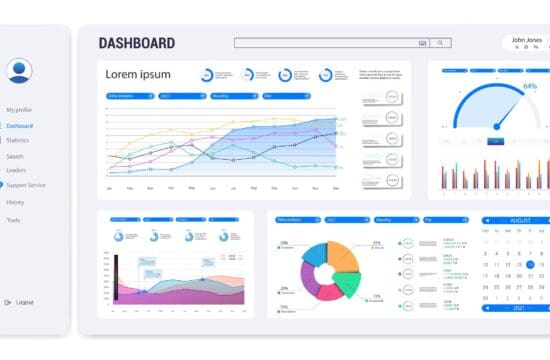In a significant development, the Securities and Exchange Commission (SEC) implemented new rules effective December 2023, aimed at enhancing transparency and consistency in the disclosure of cybersecurity incidents by registrants. These rules mandate companies to divulge material information on cybersecurity incidents promptly and comprehensively.
“Whether a company loses a factory in a fire — or millions of files in a cybersecurity incident — it may be material to investors,” said SEC Chair Gary Gensler. “Currently, many public companies provide cybersecurity disclosure to investors. I think companies and investors alike, however, would benefit if this disclosure were made in a more consistent, comparable, and decision-useful way. Through helping to ensure that companies disclose material cybersecurity information, today’s rules will benefit investors, companies, and the markets connecting them.”
Here is a comprehensive guide to help Chief Information Security Officers (CISOs) proactively navigate the new SEC rules, ensuring compliance, reducing legal risks, and enhancing overall cybersecurity resilience.
Understanding Regulatory Landscape
- Review the SEC Cybersecurity Framework: Familiarize yourself and your team with the details of the SEC’s cybersecurity framework, especially the 8-K and 10-K reporting requirements.
- Assess Your Current Cybersecurity Posture: Conduct an in-depth review of your organization’s current cybersecurity practices and policies to identify gaps and areas of improvement in light of the new regulations.
Compliance Preparation
- Establish a Compliance Task Force: Form a dedicated team responsible for monitoring the timeline for compliance. Ensure they are well-versed in the specific requirements and deadlines.
- Implement Reporting Protocol: Develop and document a clear and concise protocol for reporting cyber incidents within the required four business days. This should include incident assessment criteria and communication channels.
- Training and Awareness Programs: Conduct training sessions for key personnel involved in incident reporting to ensure they understand the criteria for determining material impact and the urgency of timely reporting.
Data Visibility and Discovery
- Engage with Secuvy or Similar Services: Leverage specialized services such as Secuvy to enhance data visibility. Ensure these tools are integrated to provide a comprehensive view of all sensitive data, including dark and unstructured data.
- Data Classification and Tagging: Implement a robust data classification system, tagging sensitive information appropriately. This will streamline the identification and reporting of material cyber incidents.
- Regular Data Audits: Schedule periodic audits to verify the accuracy of data classifications and assess the effectiveness of data visibility tools. Adjust configurations as needed to enhance accuracy.
Governance and Strategy Disclosure
- Executive Oversight Disclosure: Clearly document and disclose in the annual 10-K filing the individuals within the management team responsible for overseeing cybersecurity efforts.
- Board Committee Disclosures: If applicable, provide details about any board committees specifically addressing cybersecurity issues. Ensure these committees are well-informed and active in their roles.
- Cybersecurity Strategy Communication: Clearly articulate your organization’s overall cybersecurity strategy, focusing on risk management, incident response, and ongoing efforts to strengthen cybersecurity posture.
Legal and Liability Considerations
- Study SEC Enforcement Actions: Analyze recent SEC enforcement actions, such as the case against SolarWinds, to understand the legal implications for CISOs and cybersecurity teams.
- Legal Consultation: Seek legal advice to ensure compliance with SEC rules and to mitigate potential legal risks. Develop a relationship with legal professionals well-versed in cybersecurity regulations.
Ongoing Compliance and Improvement
- Establish Continuous Monitoring Mechanisms: Implement tools and processes for continuous monitoring of cybersecurity practices, ensuring ongoing compliance with SEC rules.
- Incident Response Drills: Conduct regular incident response drills to test the effectiveness of your reporting protocol and identify areas for improvement.
- Stay Informed: Keep abreast of updates to SEC cybersecurity regulations and adjust your cybersecurity practices accordingly.
Why Partner With Secuvy?
As companies grapple with the diverse challenges posed by new SEC cybersecurity regulations, the need for comprehensive data visibility and risk management has never been more critical. The landscape is complex, and the degree of preparation required varies based on company size, ownership structure, and existing cybersecurity investments. What you’ll get by partnering with Secuvy:
Full Data Visibility in Hours: Secuvy empowers organizations with swift and comprehensive data visibility. Our cutting-edge technology ensures the discovery of ALL sensitive data assets, including dark and unstructured data, within a matter of hours.
Trailblazing Unsupervised Machine Learning: Secuvy employs advanced unsupervised machine learning algorithms, setting the standard for trailblazing innovation. This technology puts full data visibility at your fingertips, offering a renewed sense of data agility and robust risk management.
Navigate Compliance Challenges with Confidence: Whether you’re a public or private entity, small or large, Secuvy is your trusted partner in navigating the intricacies of compliance preparation. Our solutions are tailored to meet the varying needs of companies, ensuring seamless adherence to the new SEC rules.
Explore the power of Secuvy in action. Witness how our technology transforms data visibility and strengthens your security posture. Request a demo today to begin embracing a new era of cybersecurity resilience with Secuvy by your side!
























